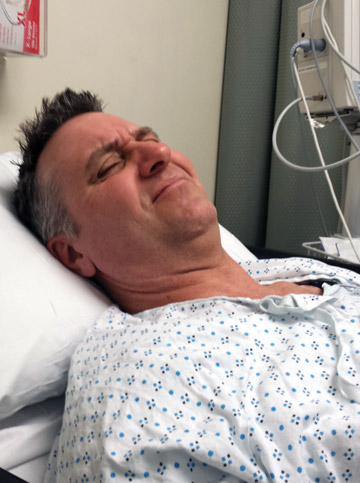Why should a breast biopsy patient receive the same amount of opioids as someone who’s had both knees replaced? That one-size-fits-all approach to pain management has contributed to the nation’s current opioid crisis — surgeons have been flying blind, often writing oversized scripts based on habit or opinion. What if your physicians had a guideline for how many opioids to prescribe for a particular procedure? Many say proscriptive prescribing would limit the number of unused and unneeded pills that continue to fuel the epidemic.
A prominent leader in that charge is Chad Brummett, MD, co-director of the Michigan Opioid Prescribing Engagement Network (OPEN), a program launched in 2016 with support from the Michigan Department of Health and Human Services, Blue Cross Blue Shield of Michigan Value Partnerships and the Institute for Healthcare Policy and Innovation at University of Michigan. Michigan OPEN’s goal is to standardize post-op and acute care opioid prescribing.
The research group rose out of a desire to cover up a blind spot in the CDC’s 2016 opioid prescription guidelines, which were released in response to the epidemic of overdose deaths. “I’m a big fan of the guidelines, but they’re really about chronic pain and chronic pain management,” says Dr. Brummett. “They have one line for acute pain that simply says to prescribe for the lowest amount possible for the shortest time possible. While I agree with that recommendation, it doesn’t necessarily direct surgeons on how to prescribe.”
Michigan OPEN has released evidence-based opioid prescription guidelines for 25 surgeries, and is in the process of adding more (see “Proven Prescribing Recommendations”).
Awareness of the need to right-size opioid prescriptions is growing among surgeons, OR staff, facility leaders and patients, and not a moment too soon. “Becoming a new persistent opioid user is one of the most common complications after elective surgery, and yet it’s something we hadn’t previously thought about or talked about with patients,” says Dr. Brummett.
His team reported in 2017 that roughly 6% of surgical patients who presented as opioid-naïve became new persistent users. The research covered both outpatient and inpatient surgeries and, interestingly, the intensity of the procedure didn’t matter; the percentage stayed about the same.
An important reason for standardizing opioid prescriptions is to eliminate confusion and even subconscious behavior by patients. “There’s some psychology behind it, in terms of, ‘If we give you more, you’re going to take more,’” says Charles Hannon, MD, a resident physician in the department of orthopedic surgery at Rush University Medical Center in Chicago, Ill. Dr. Hannon says Rush’s clinical trials found that hip and knee replacement patients who received 90 opioid pills were more likely to take more pills than patients who received 30.
Check out these numbers that emerged from the trials. The average number of opioid pills Rush hip and knee surgeons typically prescribed was between 90 to 120, in line with the national average. Dr. Bannon reports that the median number of leftover pills among patients who received 90 pills was 73, while among patients who received 30, it was 15. That means both groups took roughly the same number of pills. “We thought, ‘This is crazy, everyone really should be prescribing much fewer pills than they actually are,” says Dr. Hannon.
.svg?sfvrsn=be606e78_3)



.svg?sfvrsn=56b2f850_5)